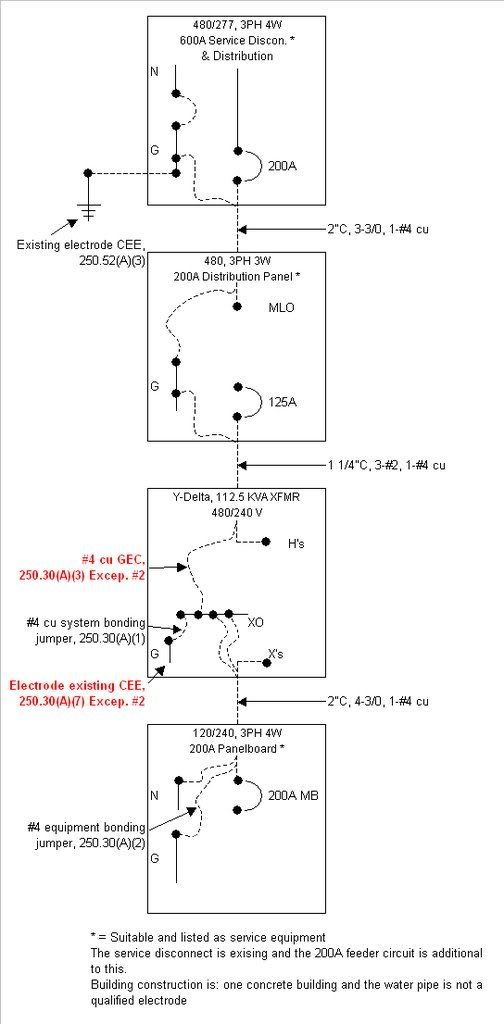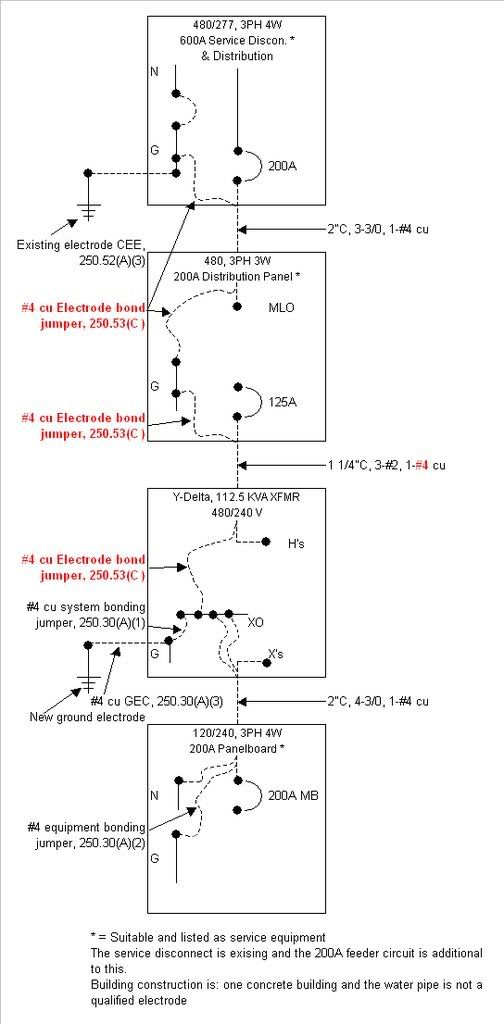tryinghard
Senior Member
- Location
- California
We?re installing a new feeder in a concrete building that has an existing CEE (ufer) at the source; and the water pipe is not a qualified electrode as per 250.52(A)(1). This new circuit includes a transformer downstream that would normally have a GEC to the building steel but there is none. We could install another driven type electrode but it will still need to bond to the existing per 250.53(C).
Regarding grounding this new transformer there are three obvious concerns: 1) electrode type, 2) grounding electrode conductor (GEC), & 3) If an additional electrode is installed I understand the bonding can terminate at distribution/panel bus locations if excising electrodes are not accessible. It appears the design below is compliant but it seems weird to use the circuit ground wire as the GEC and not provide another electrode at the transformer.
Is the use of 250.30(A)(3) Exception No. 2 appropriate with this design?

Regarding grounding this new transformer there are three obvious concerns: 1) electrode type, 2) grounding electrode conductor (GEC), & 3) If an additional electrode is installed I understand the bonding can terminate at distribution/panel bus locations if excising electrodes are not accessible. It appears the design below is compliant but it seems weird to use the circuit ground wire as the GEC and not provide another electrode at the transformer.
Is the use of 250.30(A)(3) Exception No. 2 appropriate with this design?



